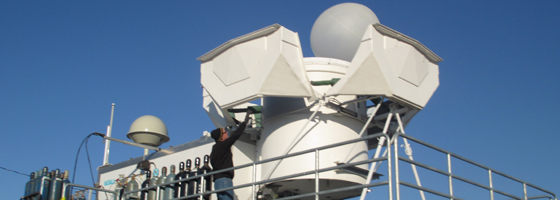Monitoring the Arctic atmosphere aids climate modeling

A team of researchers near the remote village of Barrow, Alaska is using weather balloons to study the Arctic atmosphere and help calibrate satellite-derived atmospheric data, according to a news release from Sandia National Laboratories.
The balloons are automatically launched twice a day and take rapid, successive measurements of humidity, temperature and wind speeds as it they climb into the sky. Data is radioed to a receiving station.
Data collected from the weather balloons are available electronically to labs to aid climate modeling and for use as a standard for satellite analysis of the atmosphere.
So far, scientist in Barrow found that clouds in the Arctic atmosphere are filled with supercooled liquids, instead of frozen solids. The supercooled clouds actually warm the Earth’s surface, and do so more efficiently than frozen solids.
The weather balloons supplement data from ground and tower mounted sensors, which record humidity, methane and infrared heat emissions among other parameters.
Sandia Labs scientists plan to grow their operation and enlist unmanned aerial vehicles to collect data on the Arctic atmosphere.
Image: Sandia National Laboratories station manager Mark Ivey indicates the path of a helium-filled weather balloon as it floats rapidly up from its cradle. (Credit: Neal Singer/Sandia National Laboratories)





0 comments